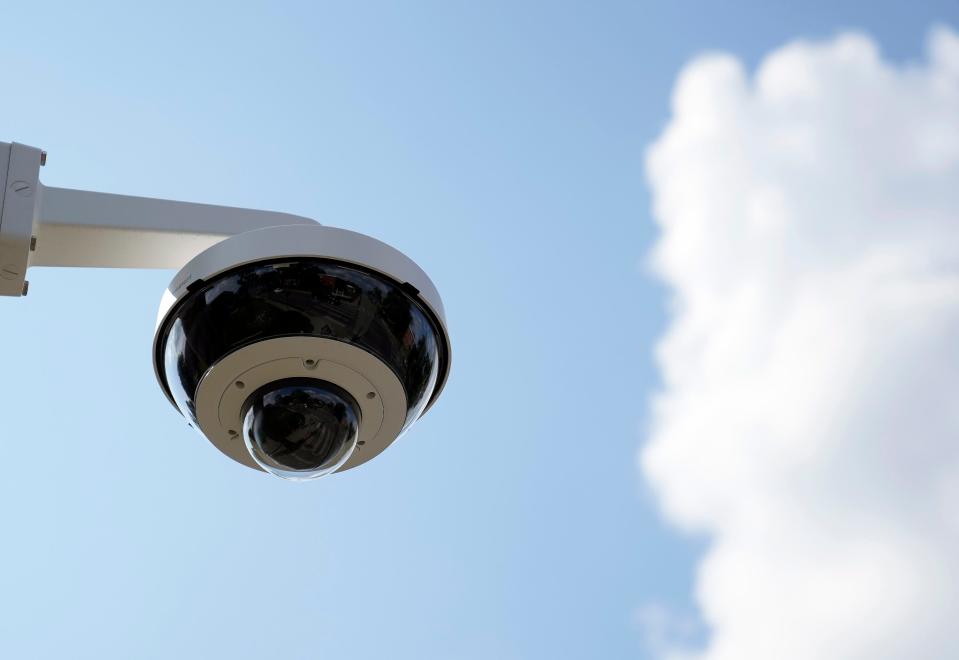Fayetteville ShotSpotter had a rocky start. How did a handcuffed man end up shot?
The city’s high-tech new system that detects gunshots and is designed to help police solve gun crimes went live this week. But already, an alert from ShotSpotter has become part of a state investigation into how a handcuffed man allegedly shot himself.
I have so far reserved judgment on ShotSpotter. But I have to say — this is not the debut the software needed.
What little can be gleaned from Fayetteville Police Department information is as follows:
More: Fayetteville City Council puts youth curfew on hold, looks at partnerships. That's a good thing.
• A shots-fired report from ShotSpotter led police officers to the 6900 block of Cliffdale Road late Sunday.
• Officers detained 29-year-old Lawrence Artis and reportedly found a gun on him.
• He was handcuffed after police say they determined he was a convicted felon who was not supposed to have a gun.
• Despite being cuffed, he was somehow able to reach for “a second firearm concealed in his pants pocket and shot himself," shortly after midnight Monday.
Three officers were placed on administrative duty per Police Department policy.
An obvious question arises as to how a man handcuffed by police still managed to grab a gun.
'This is not for Fayetteville': Some unhappy after ShotSpotter's first public session
Among other questions is who fired the shots picked up by ShotSpotter’s sensors?
We may not know any answers for a while, with the probe into the matter out of local hands and in the hands of the State Bureau of Investigation.
Fayetteville touts debut of gunshot detection
This murky incident aside, the city touted the debut of the gun-detection system in a news release on Tuesday morning.
“The first days that the system is active will serve as the system’s initial data collection period,” the release states. “Data collected will be displayed on the Fayetteville Police Department’s website and routinely updated to provide transparency for all City residents.”

The release said the gunshot detection, which went live Sept. 28, “is being implemented along a portion of the Murchison Road corridor, in the Massey Hill area and a section of west Fayetteville, near Cliffdale and South Reilly Roads.”
It had a statement from Mayor Mitch Colvin: “This is another tool our Fayetteville Police Department will have to help solve crimes ultimately keeping our residents safe. Police will be able to respond to shootings faster with more accuracy. As a council, we’re taking actions to address gun violence we are witnessing in our community.”
If a ShotSpotter alert hadn’t sent officers to the area where Artis was found, he likely never would have been detained and the end result wouldn't have happened.
If police found another shooting location, or have since tied Artis to whatever incident led to the gunshot detection, they have not said and are directing all questions to the SBI, which is notoriously tight-lipped when it comes to its work.
Special treatment for certain areas
City Councilman Mario Benavente said the incident was troubling. He has opposed ShotSpotter from the start. One of his objections, he says, is that it is sold as a solution for too few people calling 911 — but he said there has been no data produced that shows this is a particular problem in Fayetteville.
He also says when officers respond to a site where gunshots were detected, anyone in that area is subject to being questioned or detained — which he considers a suspension of an individual's 4th Amendment rights, an objection that has been raised by legal experts about other cities where the software is in use.
He cites the case of Adam Toledo, a 13-year-old boy in Chicago who “as soon as the police rolled up, he was shot and killed as a result of a ShotSpotter alert,” Benavente says. Authorities said Toledo was holding a gun that another man had fired minutes earlier, according to the Chicago Sun-Times. Chicago would later drop the program.
One of the local areas singled out for ShotSpotter coverage — the Murchison Road area — is located in Benavente’s District 3.
Previously: Fayetteville City Council votes to move ahead with controversial gunshot detection software
In his view, the parts of the city chosen for gunshot detection would be better served by increased resources instead. These could include conflict resolution taught to young people at nearby rec centers and job programs like the internship program that Benavente proposed and the City Council supported at its work session on Monday night.
He said some may object to any part of the city receiving special treatment over other parts. But he says the designated areas are already being singled out as “special” for extra surveillance.
“What is it about this area that makes it uniquely ripe for gun violence?” he said is a question city staff can look at, a process he says that may require them to go door-to-door.
That makes a lot of sense to me. The Massey Hill ShotSpotter area, for example, has a 15% unemployment rate and nearly half of its residents live below poverty, according to city staff analysis.
A set of ears on targeted areas
The sensors of ShotSpotter are essentially a set of ears placed throughout the targeted areas.
A detailed Time magazine story on how the system works said people in a remote location (in the story it was in California) look at a bank of monitors, on the hunt for a pattern of soundwaves and sounds that indicate shots fired. It interviewed an analyst identified only as Jonathan for security purposes.
“Every one of those booms and bangs are routed to this cool, dimly lit room,” Time writes. “The acoustics analysts are trained to differentiate gunfire from similar sounds like construction noise or firecrackers. When gunshots are confirmed, they send an alert that could reach the cell phone of a cop near the scene in less than a minute. ‘It’s a weird feeling,’ Jonathan says of identifying gunfire. ‘It’s like you want to see one, but you don’t.’”
The city news release states: “Alerts are sent within 60 seconds of a fired shot, notifying the department precisely when and where gun incidents occur, providing a quicker, more effective and efficient response to help save lives of gunshot victims and find critical evidence.”
A one-year contract
I should note the technology is not cheap: It will cost the city $200,000 a year, an ongoing expense that will only grow if it chooses to add locations.
The city entered into a one-year contract for ShotSpotter, a product of the SoundThinking company, which I think is a good way to approach it. We should know in a year whether the system is worth it, and whether it avoids any additional harm in the relationship between police and the community it surveils.
An investigation may show that ShotSpotter worked exactly like it was supposed to just after midnight on Monday. Even so, I don’t think that every concern raised by Benavente and others goes away.

The incident also illustrates that technology can only go so far. In the end, how officers engage with the public, including how they detain people they suspect of criminal activity, will decide whether their response is a case of "protect and serve" or something else.
Myron B. Pitts can be reached at mpitts@fayobserver.com or 910-486-3559.
This article originally appeared on The Fayetteville Observer: Fayetteville gunshot detection system debuts. Is ShotSpotter worth it?

